Sensing Spaces: Architecture Reimagined
We speak with curator Kate Goodwin on transforming London’s Royal Academy of Arts into a sensorial spatial experience
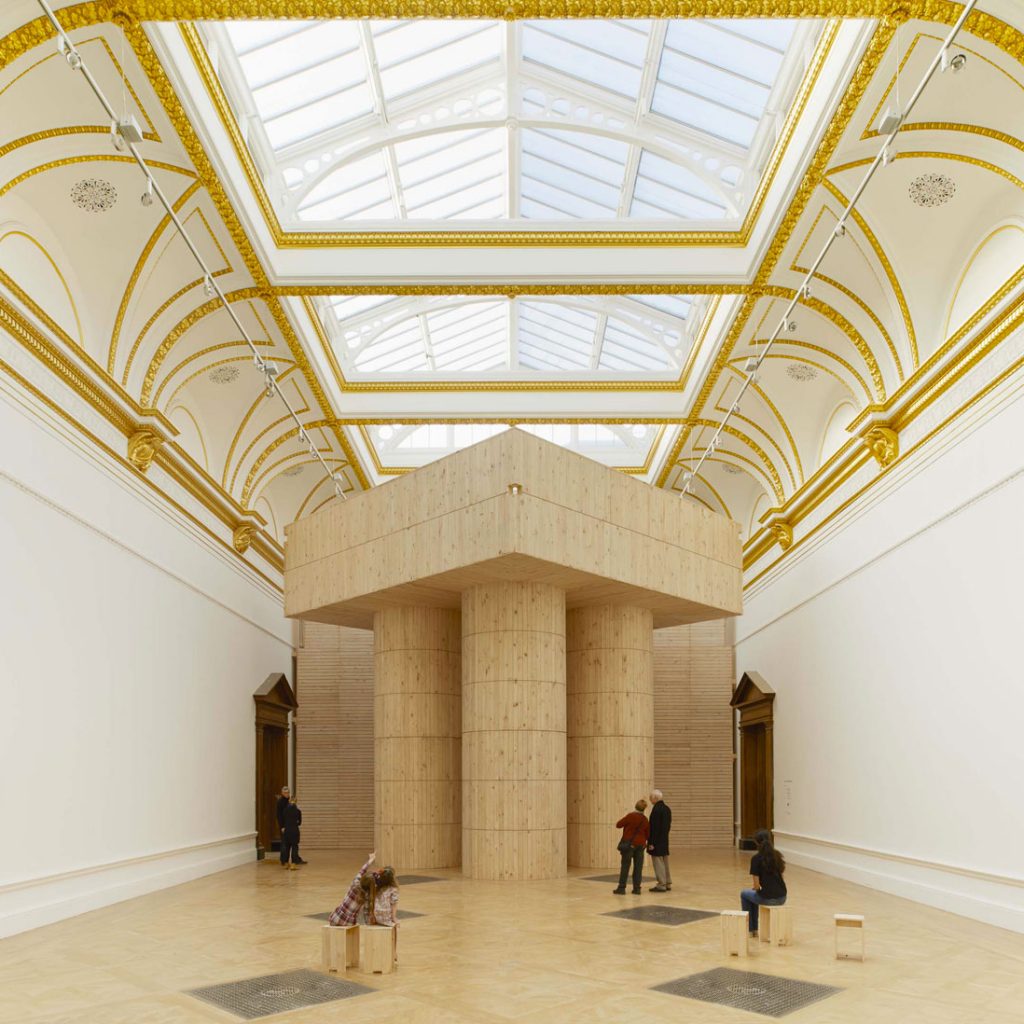
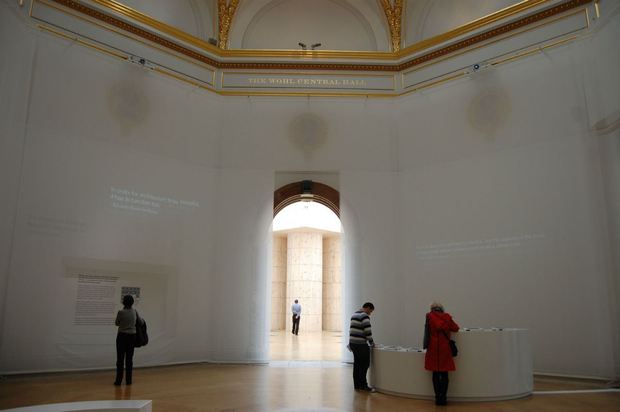
Over this past month, London’s distinguished Royal Academy of Arts (RA) witnessed large-scale preparations for one of their most highly anticipated shows, “Sensing Spaces: Architecture Reimagined.” The RA’s traditional, Beaux-Arts style gallery rooms (the walls of which have traditionally accommodated world class art tours) now enclose a new wave of interactive work, exclusively designed for the RA, that reimagines architecture’s potential for expression. The RA’s first show of 2014, “Sensing Spaces: Architecture Reimagined” (open to the public as of 25 January) considers architecture on a level overlooked by most in daily encounters. The academy’s Curator of Architecture, Kate Goodwin, has guided the RA in reimagining traditional understandings of structure in order to explore discipline’s essential sensory elements, most of which are unintentionally ignored but nonetheless reduced to background noise. For the next two months, architecture will stand at the forefront.
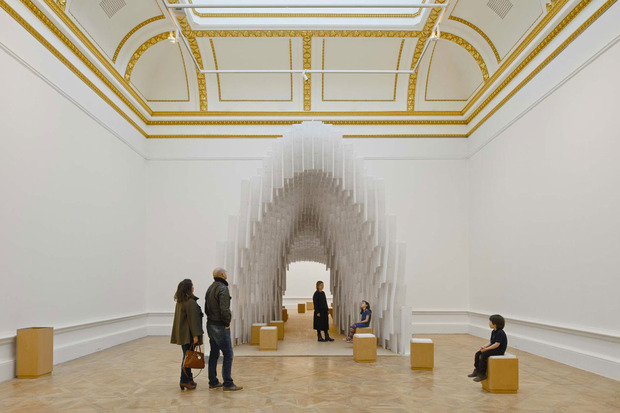
Collaboration for this site-specific venture called upon global participation. Goodwin selected seven architecture practices hailing from diverse geographical and cultural backgrounds and, most importantly, those that share a deep understanding of the sensorial capacity of architecture. The final seven architectural projects on display at the RA—each one its own experience, created by Grafton Architects (Ireland); Diébédo Francis Kéré (Germany/Burkina Faso); Kengo Kuma (Japan); Li Xiaodong (China); Pezo von Ellrichshausen (Chile); Eduardo Souto de Moura and Álvaro Siza (Portugal)—engages visitors with structures, textures, sounds, spaces and even scents.
In the most exciting way possible, each installation is reminiscent of the projects that practicing architects miss from their days in architecture school—where architects and designers had the opportunity to step back from the literal and structural world to capitalize on the human sensory faculty. But in one giant step up from the days in the classroom, each project has been realized at full-scale. The installations by Pezo von Ellrichshausen and Kengo Kuma have proven to be particularly buzz worthy due to their provocative, imposing natures—especially when juxtaposed with one another. Though there is no suggested sequence through the installations, the transitions are perhaps the most thrilling part of the experience.
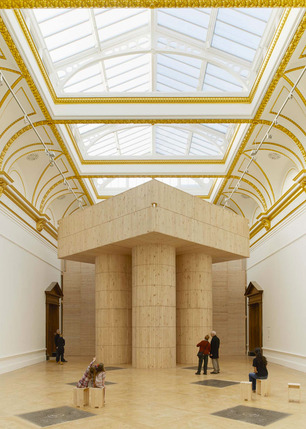
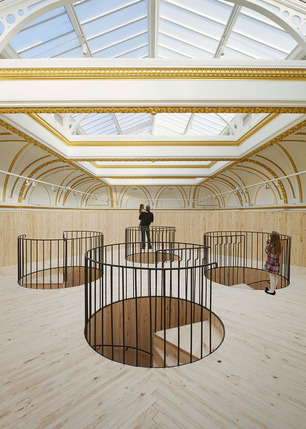
A monumental structure by Pezo von Ellrichshausen, which occupies the largest of the galleries, will challenge viewers’ sense of perspective immediately. Standing on four great pillars (that actually hide spiral staircases), the piece invites the viewer to climb to its second level, which extends up to the gallery’s ceiling. Here, viewers are encouraged to gaze through the glass roof above and admire the intricacies in the neoclassical architecture of the room itself, where gold foliate decoration meet the edges of the gallery walls.
Kengo Kuma’s interest lies in a subtle awakening of our senses. Though his installation is the only one that forbids touching, its spatial consciousness, darkness and scent inspire introspection. He works with what he calls “weak architecture,” which is not structurally weak but instead aims to be anti-monumental, again emphasizing one’s self-awareness. Kuma’s elegantly tethered bamboo sticks, infused with a carefully selected aroma, accentuate sensations of inhabiting space.
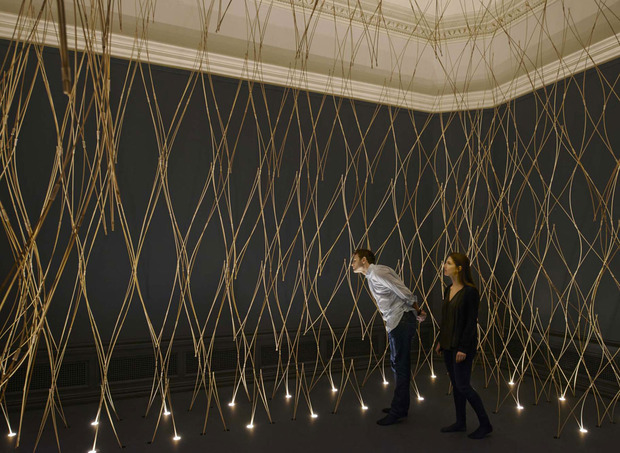
After 18 months of curating work that didn’t exist until just weeks ago, Kate Goodwin’s extensive research, hunting, traveling, connecting and conceptualizing have finally found their realized state. Goodwin took on a theoretical and managerial role much larger than that of the average curator—each installation was meticulously commissioned. She shares with CH how she was initially able to overcome working in so many parts of the world at once, and was finally able to build seven full-sized installations simultaneously—in just two weeks.
What was most exciting about this opportunity and the making of the exhibition?
It was thrilling and an honor to work with these architects from around the world—from Pritzker Prize winners to the up-and-coming. They opened my own eyes to an understanding of architecture, and the discussions we had were stimulating and enriching.
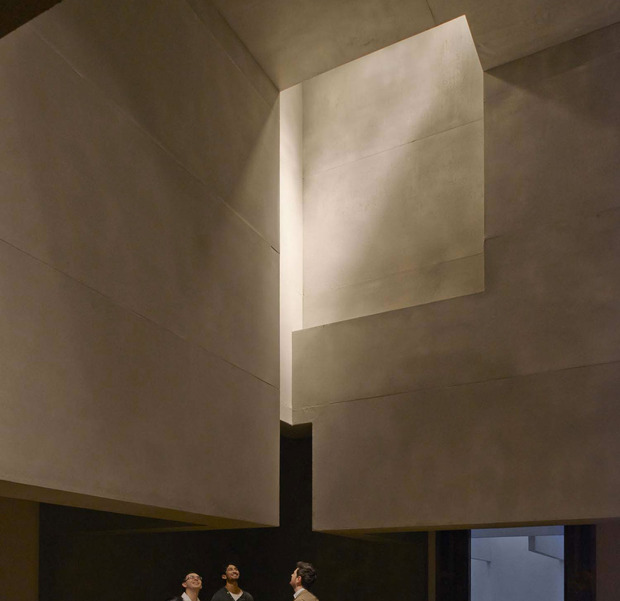
What limitations did the project and location pose?
The installations all occupy the purpose-built Royal Academy Main Galleries which are grand and richly decorated—built in 1867 following the Beaux-Art tradition. They are in one sense imposing spaces, with a strong architectural presence in their own right which all the architects were very conscious of. They are however, also incredibly generous in their scale and volume, and they have a sense of order and rationality which is generated by their symmetrical planning. Light through skylights the spaces change drastically throughout the day and night and give you a sense of being connected to the outside.
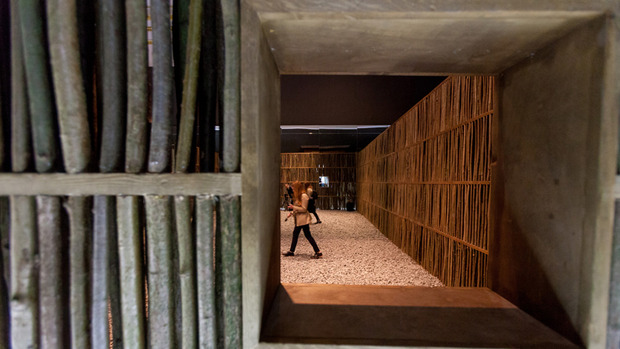
What was the hardest part about putting this together?
One of the real challenges we faced was building these huge and very complex structures within these galleries in a short period of time. It essentially entailed running seven building sites simultaneously within the Main Galleries over a 16-day period. We had other exhibitions within the building and thus needed to be open to the public at all times, with limited times in which we could move things in and out. Much was prefabricated, and a huge amount of work went into devising ways of making the installations in component parts which could be brought into the building and assembled rapidly. It was a huge managerial feat which included measuring doors and lifts, managing deliveries and schedules, to organizing teams of local builders working alongside those from Chile and Japan.
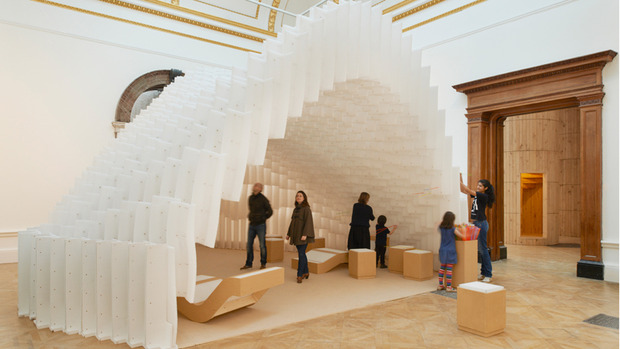
What is your favorite sensorial anecdote from your interactions with the installations?
I love moving from one installation to the other; from the monumental wooden structure by Pezo von Ellrichshausen to the very delicate and fine bamboo work by Kengo Kuma. From the craziness of Kere’s plastic tunnel that visitors are filling with straws to the labyrinth by Li Xiaodong, which he likens to walking through a forest in the snow at night. Then discovering the contemplative spaces of Grafton Architects where the light is changing so subtly. The contrasts are amazing and the vistas between galleries more interesting than I could have imagined.
As nuanced experiences with these architectural pieces are drawn out everyday by gallery visitors, how will the architects remain involved?
The visitors will be the ones to evolve the exhibition and the installations. We have seen the spaces become something beyond what we could have imagined even after the first weekend. I have been sharing pictures with the architects and most will have the chance to return and re-engage for themselves.
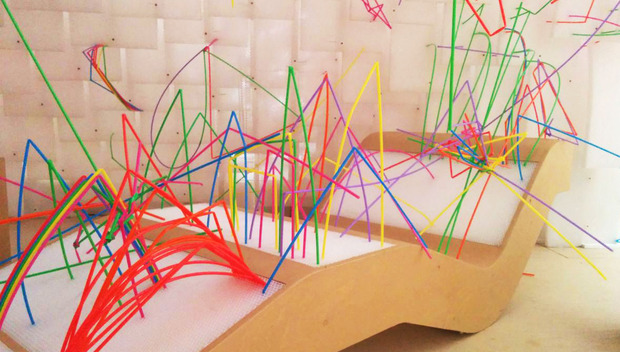
Because architecture projects of this nature—exploratory rather than determinate—are infinitely evolving, the Royal Academy of Arts will introduce a microsite to host emerging discussions between visitors and architects alike. Since these installations evoke something like performance art, and because Kéré’s straw tunnel actually involves user participation, the architects are as excited about the uncertainty of the results as the visitors are to take part in them. Likewise, a specially made film by Candida Richardson will provide visitors with the opportunity to “meet” the architects. The footage presents a range of their previous building projects, transporting the viewer from a home on the rugged Chilean coast to a school in Burkina Faso, Africa. “Sensing Spaces: Architecture Reimagined,” is on display at Royal Academy of Arts until 6 April 2014.
Images courtesy of the Royal Academy of Arts












